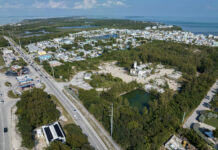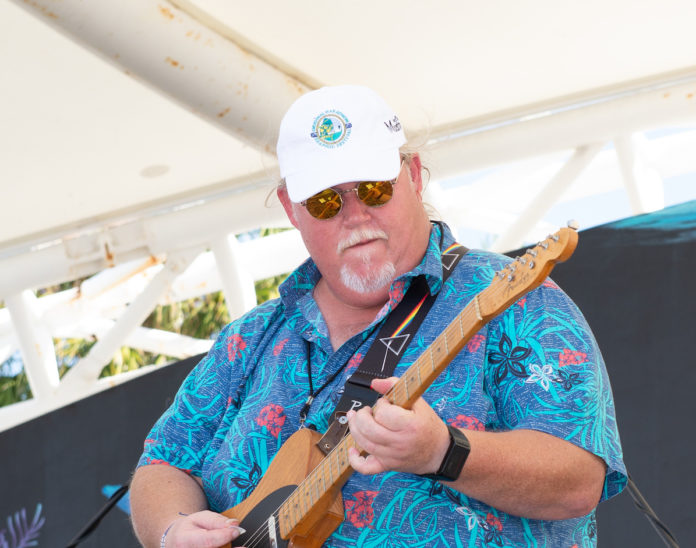Visitors to our islands (The Fabulous Florida Keys®) often notice that the various types of wildlife that inhabit these coral rocks are different from the species they have at home. No kidding. In that spirit, we here at Keys Disease Central are proud to present The Complete Simpleton’s Guide to Keys Critters.
No guide like this would be worth the paper it is written upon without mention of the kind of wildlife that truly gets up close and personal with humans. Two species are the common mosquito (Corpuscleus suckupitus) and the no-see-um (Damnitus irritatus). These insects desire what you are not necessarily inclined to share: namely, your blood.
But take a moment and look at it from the insect’s perspective. The critters that normally offer their lifeblood to hungry mosquitoes and no-see-ums usually have fur or feathers in the way of their skin – not so easy for a small insect to navigate. But here comes the relatively hairless human to the islands, and bloodsucking insects of the tropics rejoice – to them, we’re nothing more than all-you-can-eat blood buffets.
To try to deter these insects from feasting upon us, humans have developed numerous types of repellents. My personal favorite is the coil that is ignited and burns for several seconds before our island humidity renders it useless. When they do work, however, the smell is reminiscent of the aroma of the thatch roof of your tiki hut slowly smoldering prior to total combustion.
Our avian friends certainly deserve mention in our guide. Many visitors notice that our birds are somewhat different than the bluebirds of happiness that inhabit most of the continental United States. First, we have our long-necked shore birds like the heron and the egret. These birds are often seen where the highway is close to water, and as such, egrets and herons are responsible for more traffic accidents than any other bird. (“Look Myrtle! An egret is right here on the side of th-SCREECHCRASHTINKLE!”)
Pelicans are quite the popular local bird, but they have a downside: They’re shameless beggars. It’s sad to see what once was a proud fishing species being reduced to panhandling for fish scraps at docks. Let’s remember the old saying: Give a bird a fish, you feed him for a day. Teach a bird to fish, and he drinks beer like the rest of us.
Other noteworthy local birds include our ospreys, hawks and the occasional eagle. These raptors, or birds of prey, are exceptional creatures because they can catch and keep fish without any regard to size, weight or slot limits. It can be very frustrating for a fisherman to watch an osprey carry off a prize fish. Yelling at the bird won’t help, and you’ll look like a freakin’ idiot.
On Big Pine Key (and a few other “Lower” Keys), the protected Key deer roam freely. A small sub-species of the common whitetail deer, the Key deer have taken advantage of their isolation on our islands to evolve slowly into miniature versions of their former selves. This process is illustrated in the Discovery Channel documentary “Honey, I Shrunk the Herd.” It is illegal to feed the deer, which is why most of our Keys lawbreakers live on Big Pine Key.
Other endangered and protected species that call the Keys home include the Key Largo Wood Rat, the Key Largo Cotton Mouse, and the Lower Keys Marsh Rabbit. What people would consider pests “back home” are protected here in the Keys. Instead of D-Con, we have the DEP.
Unfortunately, the Keys have fallen victim to “invasive” or “exotic” species – creatures that did not originate here, but have found the Keys to be particularly habitable. Notable offenders include the green iguana, the Burmese python and the extra-large Canadian Speedo-wearing beach creature. Each of these species is threatening local wildlife, or perhaps just the view.
Finally, let’s devote a few words to our friendly neighborhood scorpions. Normally, one would think that scorpions only inhabit desert-like climates. Not so! It seems that damp, humid, moldy piles of debris make the perfect scorpion hangout. Unlike the sand-colored scorpions of the desert, our scorpions are long and black. Many Keys residents say you haven’t lived until you’ve stepped on a scorpion in your bare feet, or had one pop you in the hand when you’re cleaning up that pile of garbage in the backyard.
Well, here we are at the end of the guide, and no mention of land crabs or eastern diamondback rattlesnakes. Another time, perhaps. Sleep well …


















